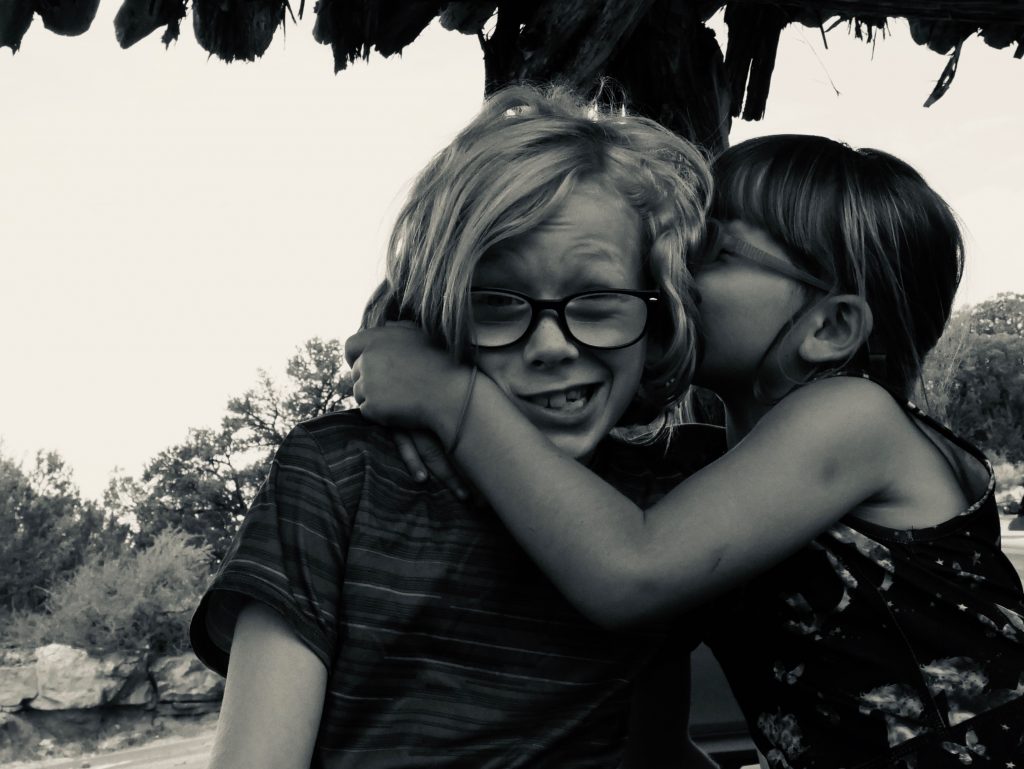No Means No: Teaching Consent
Published by Sally Yunis on
“No Means No”: Teaching Consent
**Consent is a tough topic to teach with small children, so songs incorporating the word “no,” “don’t,” “can’t,” and “respect” are highlighted in this playlist. They Might Be Giants starts out the playlist with their brilliant “No!” song.**
One day, out of the blue, your seemingly lovable, happy-go-lucky baby will transition into a toddler whose only vocabulary word seems to be “no.” It will appear to happen overnight, but their whole life experience so far has been building up to this moment of independence.
“Do you want to go outside?” “NO!”
“We’ll go for a ride in the car!” “NO!”
“But we need to go to the store.” “NO!”
“How about we just put on your shoes?” “NO!”
“Just one shoe?” “NO!”
“Okay. No shoes. Let’s go. You can pick out a treat when we get there!” “NONONONONO!”
Have you ever thought about your responses in these moments? Are you generally explaining to your flailing and screaming child the reason why you need to do something? I mean, some parents do, but I’d hazard a guess that you find your sanity slowly ebbing away as you try to pull them out the door and explain why simultaneously (note: “why?” is another one of those trigger words that seems to show up with “NO!”). As you try to get your screaming child into the car (because, let’s face it, you’re both horribly late now), you might feel a little guilty about forcing them to do something against their will. Or, you might continue with your day, as if you didn’t just pick someone up, put them into their carseat and go about your important business. Either way, you’re teaching consent in these moments.
I know that the #metoo movement has you thinking that consent is all about sex and doesn’t extend to your toddler, but the truth of the matter is that it starts with your toddler and their interactions with everyone around them. The appearance of this defiant “Nope. I’m not doing that.” is how your child learns to navigate their world and their body. By saying “no” back to them, you are teaching them directly or indirectly that their words and feelings don’t matter. I’m sure it’s not your intent to teach this ideology, but generally kids learn the word “no” because it’s something they are told repeatedly (and expected to respect).
Don’t climb up those stairs!
No. It’s too cold.
No. It’s too hot.
No, you need to go to bed.
No, because those are the rules.
No touching!
No running!
No jumping!
No! You’ll get hurt!
Stop!
Don’t do that!
You see what I’m saying, right? Parenting has become an incredibly scary job, with injury and harm just around the corner, at all times; but that type of fear-based thinking facilitates the “no” mentality and doesn’t allow children to have the freedom of expression. When we say “no” to them all the time, we inadvertently teach them to be fearful; and when we don’t accept their “no,” we teach them that their feelings aren’t worthy of discussion. Granted, there are definitely times to say “no” and those instances need to be respected; but they also need to be explained. Children deserve to know why they should or shouldn’t do something because it builds cooperation, self esteem, autonomy, confidence, body awareness and coping skills. Additionally, you are creating a discussion instead of authoritarian rule.
The ramifications of overusing the word no can be seen in children who seem to shut down or get frustrated incredibly easily when they hear no. If you are constantly telling kids what they can’t do, they’ll never really know what they can do. This is a separate facet of consent, but it’s implicit in the creation of boundaries and feeling comfortable saying no. Some kids might not want to say no because they want to please you or someone else; or, they are afraid of saying no. If this pleaser mentality starts in childhood, your child will struggle with creating boundaries as an adult and will feel guilt, shame and resentment for saying no. This is a recipe for disaster.
Kids who don’t have a good understanding of boundaries for themselves, will struggle to understand the boundaries of others. They might push buttons purposefully (some of this is completely normal) to see how far they can go before you shut them down or react with anger. Sometimes these are kids who were never really told what they could do, but were told repeatedly “No! Don’t do that! Stop that! Leave that alone!” All it takes is a simple change in tactic and tone to tell them what they can do.
Positive statements about what your child CAN do
Instead of:
Stop touching that!
Don’t do that!
Don’t run!
You can’t do that inside.
You’re not allowed to do that.
Don’t [hit, kick, punch]
Don’t say that!
That’s not yours. Give it back.
Stop whining/crying.
Say:
Keep your hands to yourself, please.
You can [fill in the blank]
Walk, please.
That’s an outdoor activity.
These are your options [list options].
Hands are for high fives; feet are for running.
Why do you feel that way?
Can you find the owner of [item]?
You are really upset right now. I’ll wait.
There are plenty of phrases that can be turned into a positive statement and I find it helpful to make my own mental list. If I’m having a bad day, I’m more apt to say no from a place of frustration, instead of positive statements or activities (note: self care is really important if you are a caretaker). This doesn’t mean that you can’t ever say no to your child. In fact, it’s unhealthy to always say yes; you then model the pleaser mentality, which doesn’t allow for healthy boundaries. Again, teaching consent is super tricky. You want no to mean no, but you also want to make sure that your child has options. Sometimes the situation a matter of safety or emotional boundaries and an emphatic no is all that is required. Other times, you will either need to explain why or give positive alternatives. The end result is that your child won’t feel trapped; rather, they will be empowered to do something on the “options” list.
Balancing your needs and the needs of your children is not easy and requires a lot of patience and understanding, but you are giving them the tools to navigate tricky social situations later in life. You want your child to be able to say “no” and have it perceived correctly as “no.” If you ignore your child’s pleas and continue doing something that they don’t want to do, you are not giving them the understanding that “no means no.” You are teaching them that “no” only sometimes means “no,” and only when I want it to mean that. Without meaning to, you are teaching your child to either shut down another person’s “no” or discount it as unworthy of attention. The ramifications of these actions in childhood can be seen later in life and are the hallmark in the #metoo movement, which is comprised of survivors of sexual assault (whether physical or verbal).
Nobody wants their child to be a victim or a perpetrator, so you need to step up as a parent and recognize teaching moments as they appear. You also need to educate yourself on what consent looks like and what it clearly does not look like. For reference, consent is defined as when you give someone permission to do something, say yes or no, or are allowed to do something. To facilitate this discussion, I’ve made some charts.
Ways to say “No” (some are more kind than others)
I don’t like that.
No thanks.
Not right now.
Maybe later.
I changed my mind.
I need some alone time.
Don’t touch me.
I’m feeling overwhelmed.
That’s not my thing.
Ask me later.
Nah.
I don’t want to.
I can’t.
No.
Quit that.
Some other time.
That’s not okay.
Stop.
Stop in sign language (palm out)
That’s not happening.
I’m not interested in that.
Please don’t.
I’m not fond of that.
Nope.
Leave me alone, please.
Go away.
Don’t touch that.
I’m not a fan.
Nuh-uh.
No way.
I don’t need to.
I shouldn’t.
You’re bothering me.
*thumbs down*
*physically leave the situation*
*turn your back to someone*
*push someone away*
*shake head*
*look away*
*shake finger*
To summarize, there are a million different ways to say no to someone, ranging from a head shake to an outright “leave me alone.” It’s incredibly important for our children to see and understand a very nuanced “no.” Sometimes, tone of voice can be the only clue that someone is seriously not okay with something. Other times, it’s not perceived as safe to vocalize the word no or even a negative sentiment, so we need to be aware of the other person’s body language and microexpressions. If someone turns away from you and looks away simultaneously, that’s their body’s way of saying no. They might also “go rigid” or seem to freeze. If you notice body language that changes abruptly in a conversation, you know that whatever was said has provoked a response. Kids are really good at provoking a response, which can make this type of teaching incredibly challenging.
Basically, you need to be able to differentiate between obstinance or defiance and “this is unsafe” or “my body and emotions say no.” In order to do this, we can use tickling as an example. Everyone has had at least one experience where a friend or family member took tickling too far – maybe you almost peed your pants; maybe they weren’t tickling you in a gentle way and were actually hurting you; or, maybe you just didn’t feel like being touched. Either way, tickling is all about consent and it’s a great way to teach “no means no.” This is even something that you can do with babies – as they will be open to touch one minute and not open the next. The moment someone says no or shows signs of distress, the tickling stops.
Sometimes kids will say no by crying; others will just stiffen up their entire bodies and stop interacting. Not all kids will respond in the same way each time, so it’s your job to acknowledge what their no looks like in that moment. In order to use the moment to teach the idea of consent, you can simply vocalize the experience. For example, you can say “Okay, I’m going to stop.” If you try to re-engage with something like, “I’m gonna get you!” and the child is smiling and their body says that they’re open to continue, then you can continue with the game. If you’re uncertain because they are saying “Stop!” and then reaching out to you for more tickling, you just ask them if they want to continue. It’s really easy. You can say, “Are you done or do you want to keep going?” An enthusiastic “yes!” means yes; anything else means “no.”
When to ask for consent
Hugs
Kisses
High fives
Tickling
Holding hands
Any physical contact (wrestling, etc)
Making up a nickname (can I call you)
Borrowing things from other people
Sharing items or food
when receiving a gift (is this for me?)
Telling secrets
Sitting next to someone
Going to someone’s house
Play (Is it okay if I play with you?)
Asking for hugs and kisses is a great way for friends and relatives to reinforce the idea of consent. We’ve all been to holiday gatherings and felt that uncomfortable sensation of not wanting to be hugged or kissed by someone, yet being hugged or kissed by them. It doesn’t feel good to us and our children are no different. Ignoring their “no” or “not right now,” teaches our children that their body is not theirs – that they don’t have autonomy. In these moments, channel the feminist mantra, “My body, my choice” and extend it to your children. It’s incredibly empowering for them to have something like a mantra to fall back on when they enter uncomfortable or tricky social situations (heck, it’s still empowering for me).
In order to get through the doorway greeting with well-meaning family members, you can have a conversation with your kids before you arrive. Talk about the unspoken rituals** and let them know that it’s okay for them to not participate. Empower your kids to use words such as “Hello!” or “It’s good to see you!” instead of physical gestures like hugs and kisses if they don’t want physical affection. On the other hand, if your friends or relatives have a hard time understanding why your child doesn’t want to engage, you don’t have to feel responsible for your child’s actions. Remember, they are a separate entity from you – not an extension of your body. Let them own their feelings and experiences. If you have a particularly surly or stubborn family member and they need an explanation, simply say “My child doesn’t want a hug or kiss right now.” You are stating a fact and allowing your child to navigate their own feelings and experiences (which builds agency and resilience).
**It’s important to understand that greeting rituals are different throughout the world and American customs are not the only customs you’ll come across. Here are some resources for ways in which other cultures greet one another. Say Hello; Greeting Customs; A Traveler’s Guide**

**This is a good example of “no.” The facial expressions and body language of my older child are definitely saying “no,” but there was no verbal “no” in the moment. This was quickly rectified by my older child simply pushing their sibling away after the photo was taken. If you didn’t realize this already, siblings constantly learn and push boundaries with each other, which allows them to navigate friendships outside of their family much more smoothly. It might drive you crazy when they constantly pester each other, but they are learning about boundaries and personal space.**
Life is full of moments to teach consent and it’s your job to take advantage of those situations. If you notice that your child is shutting down each time you say no or purposefully pushing your buttons, take a step back and figure out how you need to change your tactic. Healthy boundaries involve an understanding of your own space and the space of those around you. If you or your child can’t read body language very well and rely heavily upon words (auditory vs visual learners), try to focus on the tone of the person’s voice. Remember, there are many ways to say no, ranging from a “thumbs down” to “go away.”
If there’s just one thing that you take away from this post, it should be that you are constantly teaching consent and personal boundaries to your child(ren). Make sure that your child understands that no always means no, unless it’s an emphatic and enthusiastic yes. It’s also incredibly important to use positive phrases and affirmations more than “don’t, can’t, shouldn’t, won’t” and no. If you overuse the word, it seems to lose its power, causing your child to lose any sense of agency or confidence. It may sound incredibly confusing to read “stop saying no so much” while also reading “say no.” I hear you. Life is a balance and the key is to know where the boundaries lie and when we’ve overstepped them (how/when to say no). Our goal is to raise resilient, happy, confident kids who have no trouble saying or accepting the word no (of which there will be plenty) and maintaining healthy physical and emotional boundaries. It won’t be easy and you’ll have days that are better than others, but that’s okay. You are human. We’re all in this together.
Resources for Further Reading: Teacher’s Guide to Consent; How to Start Teaching Consent; This Is How You Teach Kids About Consent; How To Teach Consent To Kids In 5 Simple Steps; The New Birds and Bees: Teaching Kids About Boundaries and Consent; 12 Reasons People Pleasers Always End up Unhappy; How to Stay Positive and Avoid Saying No Too Much; Why You Should Learn to Say No More Often
Books for Kids & Parents:














